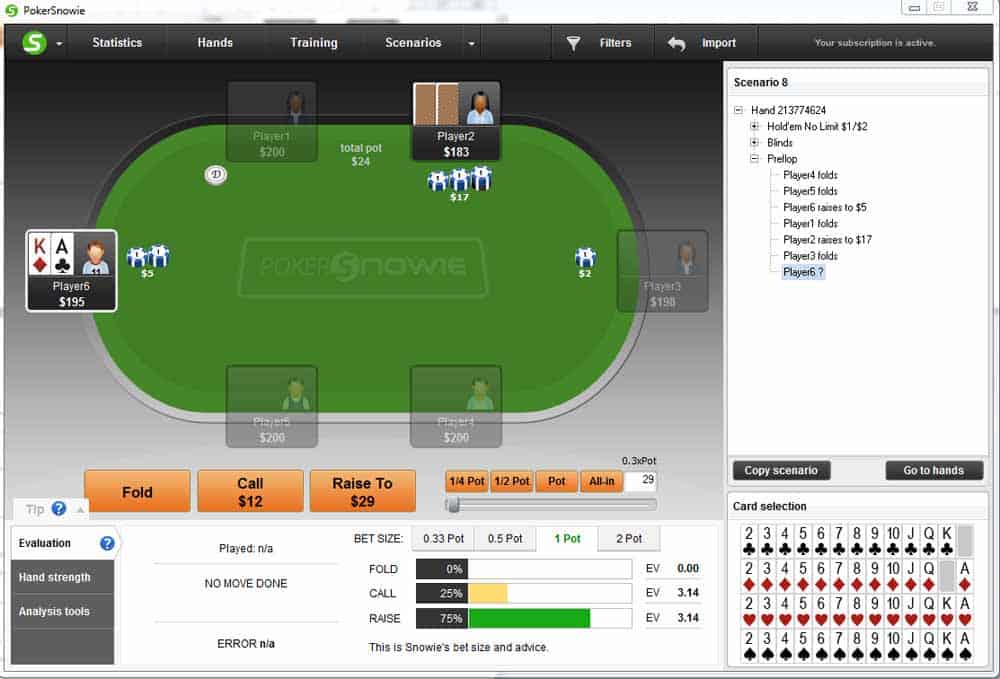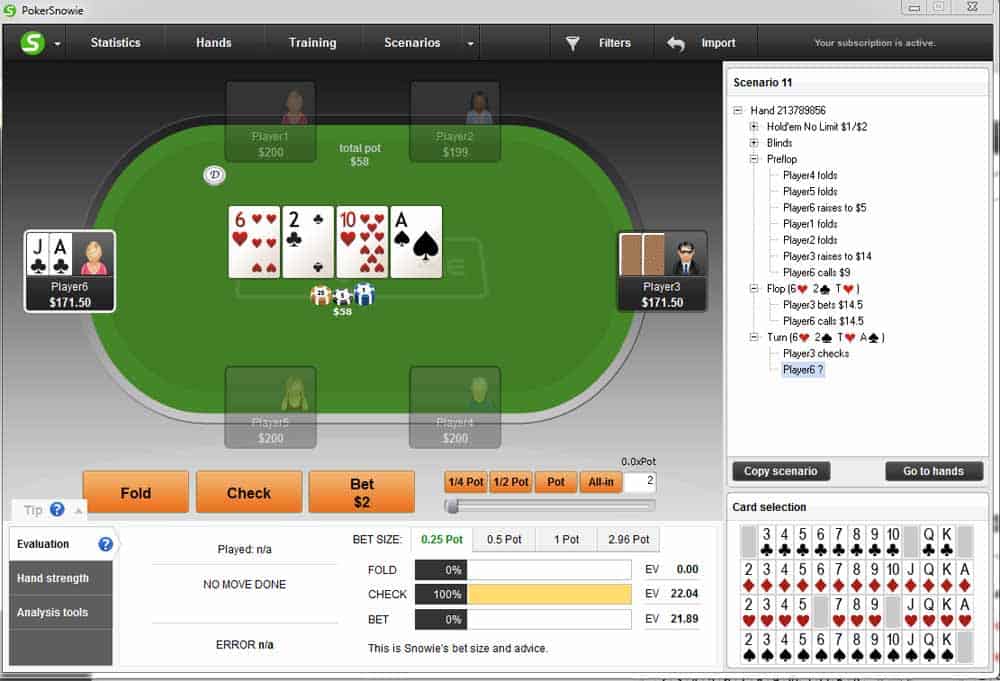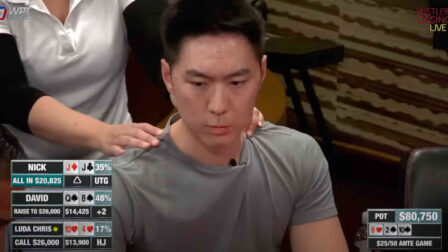3-BET POTS STRATEGY: Building The Game Plan

8 minutes
Last Updated: January 18, 2023
3-bet Pots Strategy – Building The Game Plan
Playing in 3-bet Pots: Win More With These Adjustments
Finding the right strategy to navigate 3-bet pots in Texas Hold'em is one of the key areas of your overall game-plan. By the nature of things, 3-bet pots are usually on the bigger side, which means they involve more variance. Adjusting your ranges according to opponents' tendencies, situations, and stack sizes are, thus, crucial to improving your overall win-rate in these spots.
In this article, we'll look into different aspects of 3-bet pots, including preflop spots where you should or shouldn't get involved as well as different postflop scenarios. By understanding what things to pay attention to in these situations and how to apply the gathered information to your decisions, you should be able not only to win more but also stop bleeding your chips away in tricky spots.
3-bets and Stack Sizes Before the Flop
Many players suffer from a leak that is easy to fix in theory but things get more complicated in practice. This leak has to do with hating to fold to 3-bets with hands that seem reasonable and have good playability after the flop. We are talking about hands like suited connectors or small pocket pairs, which can be quite powerful in big pots if you manage to connect well with the board.
However, this only works if both you and your opponent will be deep enough after the flop, i.e. the effective stack size and SPR will be big enough to warrant a call before the flop and proceeding with the hand. To explain this better, let's look at some PokerSnowie examples.

Get PokerSnowie FREE Trial and try it yourself!
In this example, we have a hand that clearly warrants a raise before the flop. However, the big blind has only 25 big blinds and they decided to 3-bet on the larger side.
In this particular situation, PokerSnowie advocates for folding the hand because if we do call, the big blind will have an SPR of slightly over 1, which means there will be no maneuvering space and we might even find ourselves in a situation where we have to call off with a weak hand, which will be a losing play in the long run.

Now, if we look at the same situation but with effective stacks of 100 big blinds to start the hand, we have a clear call on our hands. We have more than enough equity to take the flop in position and stack sizes are such that we'll have plenty of maneuvering room on different board textures, including some bluffing opportunities.
So, you should always pay attention to effective stack sizes when faced with a 3-bet. This is especially important in tournaments, where scenarios such as the first one are more common. In cash games, players are usually deeper, so there is more postflop play.
Calling 3-bets from short-stacked players with speculative hands is a losing play and if you do it frequently, you’ll definitely be bleeding money. To avoid that, grab my poker cheat sheet and avoid common mistakes!
Flatting vs. 4-betting Preflop
We won’t be discussing 4-betting too much in this article as it is an extensive topic on its own. However, it needs to be at least briefly addressed as one of the options you have when you’re faced with a 3-bet before the flop.
When weighing your options, you should always think about factors such as:
- Your position at the table
- The position of the 3-bettor
- Their 3-betting stats (range) – use poker tools to see that
- Effective stacks
Competent players looking for 3-bet opportunities will first look into where the raise is coming from and player's vpip/pfr poker stats. If you’re raising from the button or cutoff, they know your range is much wider than if the raise came from UTG.
So, if you’re raising from an early position and still face a 3-bet, you should proceed with caution if you’re up against a player you see as competent. They aren’t very likely to be just spewing around, so your 4-betting range should not be huge.
Of course, having a decent sample of hands on your opponent can be very helpful in these spots. You can check out their 3-bet percentage and see if they’re someone who is really trigger happy or their 3-bets are heavily weighted towards the value part of the range.
4-betting someone who seems to be 3-betting wide is definitely a valid strategy that you need to include into your game-plan to punish your opponents for 3-betting too wide.
Finally, always pay attention to the stack size. Although we’ve already covered this a bit, it is such an important point that it is worth mentioning again. If you’re facing a 3-bet from a shorter stack (30-40 big blinds), you’ll need a really compelling argument to 4-bet them light. It is all too easy to find yourself committed in these spots with a fairly weak hand if you aren’t careful.

In this scenario, for example, PokerSnowie suggests that the 4-bet isn't always mandatory. Although we have a very strong hand and a position, we should be mixing things some of the time.
Therefore, just calling let us keep SB range wide, prevents him from folding hands that we dominate and protects our calling range in general. So with effective stacks of 100 big blinds, it is fine to simply take the flop in position some of the time.
After the Flop: Playing in Position
There are two options for playing in 3-bet pots after the flop. You can either be in the position or out of position. We'll first look into some situations where we get to play in position.
As always, being in position is a great advantage for obvious reasons. Although we don't have the initiative in the hand, we get to act last, so we can adjust our play according to our opponent's actions and the perceived range of poker hands we're putting them on.

In this situation, we decided to call a 3-bet from the big blind and get to the flop that we don't connect with immediately but do have a lot of backdoor equity and overcards. So, the standard play is to call the continuation bet and see the turn. We do and hit the top pair on the turn. Our opponent checks to us.
PokerSnowie suggests checking back 71% of the time and betting out 29%. Our hand has improved significantly on the turn, as we have the top pair and the top kicker now.
However, our opponent does not have many hands in his range that he is willing to call multiple streets, so it totally makes sense to check back some of the time and value bet river or call a bet from him. So, the check-back is a preferred option but going for some value is also acceptable to balance your play.

Get PokerSnowie FREE Trial and try it yourself!
In the same scenario but with the turn being As instead of Jd, PokerSnowie suggests checking back 100% of the time. The reason for this is three-fold:
- Hands containing an Ace in the opponent's 3-betting range are likely ahead of us
- Hands without an Ace can't realistically call two streets
- You want to give him a chance to bluff on the river
So, we're checking here for both protection and deception. In the previous scenario, we had a situation where many river cards weren't that good for us, so betting some percentage of the time to protect our equity makes sense. Here, however, we're in the way-ahead or way-behind situation, so betting accomplishes very little.
Our plan should be to check back the turn and then either call the river or bet for value when checked to.
Out of Position Play
When you're out of position and faced with a 3-bet, you should probably include some more 4-bet bluffs and reduce the number of hands you actually call with.
Playing 3-bet pots out of position can be very tricky and the best suggestion is to reduce your preflop calling range in these spots, especially against competent players.
The reason for this is that you'll have problems realizing your equity with hands like small pocket pairs and suited connectors because your opponent will have much better control over the hand. Even if you flop some equity, like an inside straight draw, or overcards, there won't be an easy way to play it.
Even when you flop a set, for example, it will be hard to continue on different boards, because they'll check back some of the time, denying you the chance to check-raise. If you donk bet into them, your play will become transparent after a while.
So, when out of position, try to avoid playing with too many speculative hands. Of course, you will still want to play fairly strong hands like AJ+ and 77+, but really small pocket pairs and small suited connectors tend to severely under-realize their equity in these spots.
Conclusion: Give It Time & Learn from Experience
Playing in 3-bet pots is a fairly complicated area and it isn’t something you’ll be able to learn in a few hours. It takes a lot of experience and a lot of studying to remove errors from your game and start making decisions that are close to optimal in most situations. You can surely find more info in one of the best poker training sites or read Upswing poker lab review.
This article underlines some of the biggest considerations you should be aware of when playing in 3-bet pots and how to approach some of the most common situations. Examples shown in here are just a representation, as you can expand them to many similar hands from the same group.
To summarize, when getting involved in 3-bet pots, always keep in mind the effective stack sizes, yours and your opponent’s perceived range, a position at the table, as well as any reads and information available to you. Combined together, these should help you make the best decision a fair amount of time.
Summary:
- Fold speculative hands against 3-bets when you or your opponents have a short stack.
- Don’t flat many 3-bets when you are out of position. Instead, 4-bet a bit more.
- Evaluate your opponent's range, and do not try to guess his exact hand.
- Check back medium-strength hands when you are IP on the flop.
- Avoid c-betting too much OOP because it can easily be exploited.





















